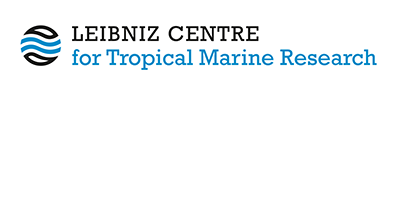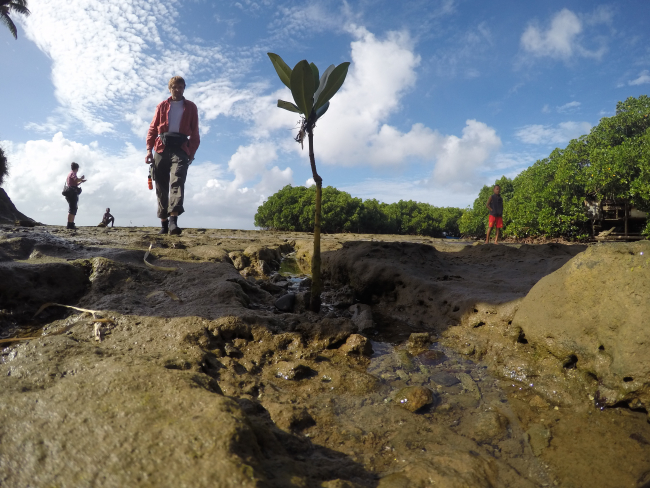28/10/2022 | For the first time, the German Marine Research Alliance (DAM) is taking part in Berlin Science Week using the opportunity to present its work and exciting contributions from the field of marine science. The programme "How the sea can help the climate" includes contributions from DAM member institutions with scientists giving an insight into their work, showing new research findings and talking about the role of coasts, seas and oceans in addressing the climate crisis. ZMT will also be part of the event: Mangrove ecologist Prof. Dr. Martin Zimmer will take the audience on a journey to tropical mangrove forests shedding a light on the role of mangroves for climate protection, but also separating the wheat from the chaff when it comes to reforestation campaigns.
When: Friday, November 4 | 14:00 - 15:30
Where: Humboldt Auditorium - Museum für Naturkunde Berlin
Introduction to the German Alliance for Marine Research
Dr. -Ing. Annekatrin Lehmann, Managing Director of the German Alliance for Marine Research and Head of the Core Research Division, on DAM's goals and activities, its current and planned research missions, and its integration into the UN Decade of Oceans.
Olivine - a solution against climate change? No, just a helping tool
Dr. Maria-Elena Vorrath, geoscientist and biochemist from the University of Hamburg, shows in her ScienceSlam contribution how she tries to find solutions for an emission-neutral future.
Olivin – Lösung gegen den Klimawandel? Nein, nur eine Hilfe
Dr. Maria-Elena Vorrath, Geowissenschaftlerin und Biochemikerin, zeigt in ihrem ScienceSlam-Beitrag wie sie versucht, Lösungsansätze für eine emissionsneutrale Zukunft zu finden.
Mangroven: vom Sinn und Unsinn, Bäume zu pflanzen
Prof. Dr. Martin Zimmer, Mangrovenökologe am Leibniz-Zentrum, für Marine Tropenforschung (ZMT) und Professor an der Universität Bremen, erklärt, wie Mangroven als CO2 Speicher dienen können – als potenzieller Beitrag zur Lösung der Klimakrise.
Der Kampf gegen den Klimawandel treibt Blüten und Blätter: Bäume zu pflanzen, um langfristig CO2 zu speichern, hat sich zu einem verbreiteten Geschäftsmodell und Marketinginstrument vieler Firmen entwickelt. Da Mangroven zu den effizientesten Speichern von CO2 gehören (Stichwort „Blue Carbon“), ist dies auch an der Mangrovenaufforstung nicht spurlos vorbeigegangen. Gute Idee? Je nachdem: gut gemeint ist nicht immer gut gemacht. Häufig sind Baumpflanzaktionen nicht nur sinn-, sondern auch erfolglos: es muss nicht nur der Platz vorhanden sein, auch die (Umwelt-)Bedingungen müssen stimmen. Und meistens ist es nicht damit getan, einen Baumsämling in den Boden zu stecken. Dr. Martin Zimmer, Mangrovenökologe am Leibniz-Zentrum, für Marine Tropenforschung (ZMT) und Professor an der Universität Bremen, erklärt die Hintergründe. Dabei erzählt er auch aus seinem Forscherleben – etwa warum er bei 40 Grad im Schatten gerne durch hüfthohes Wasser watet und in Schlamm und Schlick wühlt.
Mangroves: about the sense and nonsense of planting trees
Prof. Dr. Martin Zimmer, mangrove ecologist at the Leibniz Center for Tropical Marine Research (ZMT) and professor at the University of Bremen, explains how mangroves can serve as CO2 sinks - as a potential contribution to solving the climate crisis.
The fight against climate change is sprouting flowers and leaves: planting trees to store CO2 in the long term has become a business model and marketing tool for many companies. Since mangroves are among the most efficient arbon sinks ("blue carbon"), mangrove reforestation campiagn are becoming increasingly popular. A good idea? That depends: sometimes these efforts are well-meant but they are not always well done. Often, tree planting campaigns are not only pointless but also unsuccessful: not only must the space be available, the (environmental) conditions must also be right. And in most cases, it is not enough just to put a tree seedling in the ground. Prof. Dr. Martin Zimmer, explains the situation. He also talks about his life as a researcher - for example, why he likes to wade through waist-high water and dig through mud and silt at 40 °C in the shade.
"Where's the smelt?" - About the problems and impacts of climate change on local fish stocks
David Drewes, an oceanographer and PhD student at the Helmholtz Center Hereon, describes how climate change and other anthropogenic environmental changes are affecting fish stocks of smelt in the Elbe River and why this should be considered for future management decisions.
"Breaking the ice ..." - Research between sharp ice ridges and deep water channels in Arctic sea ice
Luisa von Albedyll, sea ice physicist and PhD student at the Alfred Wegener Institute, shares experiences and insights from her time aboard the research icebreaker Polarstern and her participation in arguably the largest Arctic expedition ever: Multidisciplinary drifting Observatory for the study of Arctic Climate (MOSAiC).
The event is free of charge, registration is required.
The Humboldt Auditorium (Natural History Museum Berlin) is located a few meters from the museum.
More information:
https://www.allianz-meeresforschung.de/veranstaltung/berlin-science-week-campus/
https://berlinscienceweek.com/event/wie-das-meer-dem-klima-helfen-kann/





